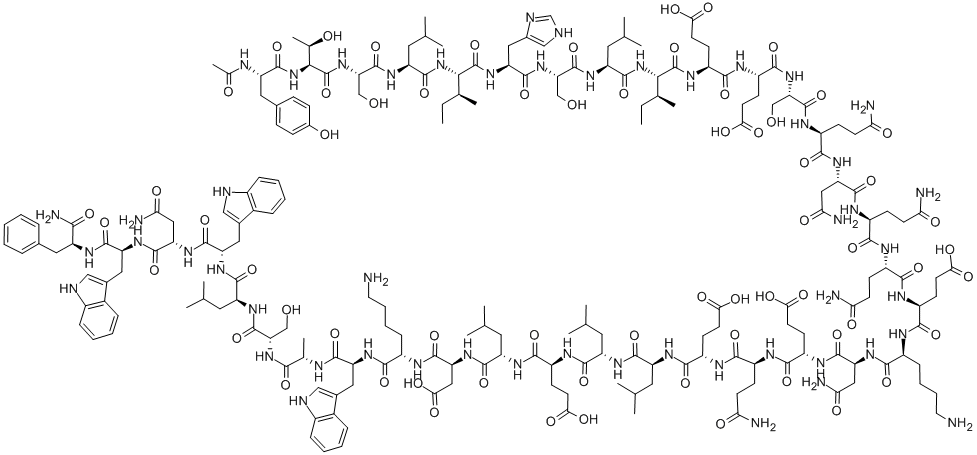Enfuvirtide is the first of a new class of HIV therapeutics that interferes with the entry of HIV-1 by inhibiting fusion of viral and cellular membranes. It binds to the first heptad-repeat (HR1) in ghe gp41 subunit of the viral envelope glycoprotein and prevents the conformational changes required for the fusion with cell membranes, thus representing a new mechanism. It is a potent inhibitor of this binding with an IC50 in laboratory and primary isolates (HIV-1 clades A–G) ranging from 4 to 280 nM (18–1260 ng/mL), but has virtually no activity against HIV-2. Due to its unique mechanism, it does not show cross-resistance to NRTI, NNRTI and PIs. It is prepared by chemical synthesis, using a combination of solution and solid phase steps. The solid phase steps utilize fmoc protection and the acid sensitive 2- chlorotrityl chloride resin to produce peptides of lengths ranging from nine to sixteen amino acids. These amino acids are subsequently coupled to form the full-length peptide followed by side-chain deprotection and column chromatography. In the HuPBMC-SCID mouse model of HIV-1 infection enfuvirtide showed a dosedependent decrease in viral load. At doses of 200 mg/kg/day, it decreased the RNA levels to 8.2 copies/1 million cells compared to 17 million copies/1 million cells in the saline-treated group. In a clinical study involving 78 heavily pretreated patients (plasma HIV RNA>5000 copies/mL), enfuvirtide dosing of 12.5–200 mg/day by b.i.d. subcutaneous injection resulted in a dose-dependent decrease in viral load (plasma HIV RNA 0.3–1.6 log 10 copies/mL). In a combination drug study where all patients received an optimized retroviral regimen with or without enfuvirtide, it was found that, at week 24, the enfuvirtide group had a 4.5 fold-relative drop in HIV RNA copies/mL relative to the standard treatment group. Subjects received 3–5 antiretroviral agents with or without enfuvirtide. In clinical trials, HIV-1 isolates from 185 patients using enfuvirtide in a cocktail with other antiretroviral agents showed 4 to 422-fold decrease in sensitivity to this drug. These more resistant types had changes in the gp41 amino acids 36–45. Enfuvirtide is dosed twice per day (90 mg) by subcutaneous injection and has an elimination half-life of about 3.8 h. It is highly plasma protein bound (92%) and has a Vdss is 5.5 L. Local injection site irritation (98% had at least one reaction), diarrhea (26.8%), nausea (20.1%), and fatigue (16.1%) were the most common adverse events.

